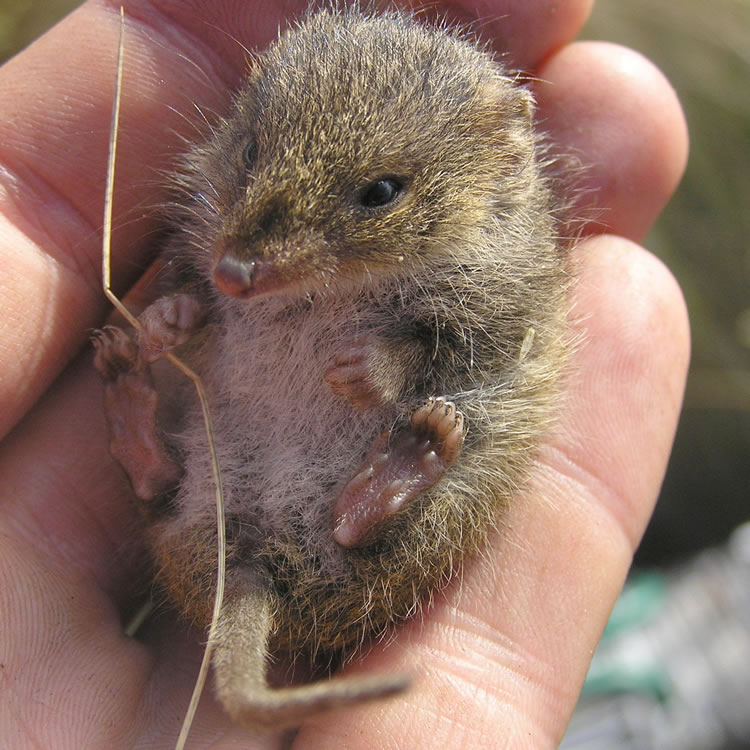Swamp antechinus

Community type
Habitat type
Tidal wetlands and macrophytes beds
This small native mammal is related to the well known quoll and Tasmanian devil. Also known as the little Tasmanian marsupial mouse, swamp antechinus are mostly nocturnal and live in small burrows or nests of grass. They prefer wet habitats of dense heath, sedgeland, or tussock grass land, like the banks of many wetlands, lakes and streams.
Antechinus are voracious predators with their long snout and many sharp teeth enabling them to devour moths, locusts, dragonflies, and any other insects they find. Antechinus are unusual mammals, as they are very short-lived compared to similar sized species of native rats and mice. Male antechinus often only live for a single year: the stress associated with competing for a mate and breeding is so great that breeding animals die soon after. Females live a little longer, for two to three years.
This short life span means that any event that disrupts their breeding cycle (e.g. flood or fire) can wipe out the population in that area. The major threats to the species are habitat loss including drainage of swamp habitats, fragmentation of its population due to roads and walking tracks, poor fire management, wildfires and feral predators.
